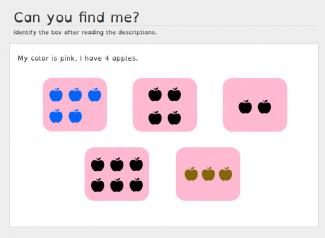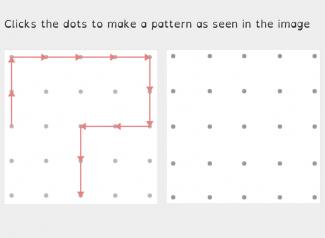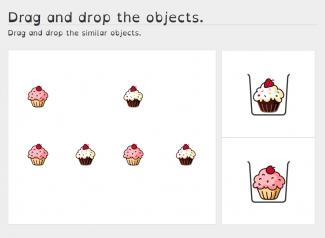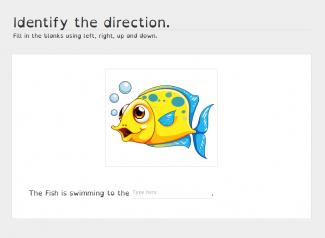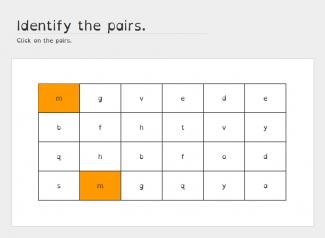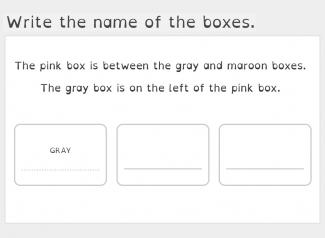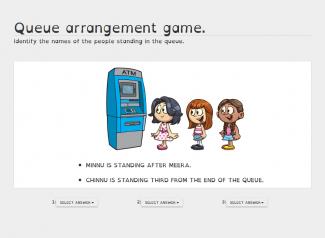Dysgraphia
Writing is an important form of communication and is a complex skill that needs coordination of several abilities. Some people find problems in writing. If your child shows trouble in writing, you may want to learn more about this condition. Here you will find a brief introduction to dysgraphia.
Definition
Dysgraphia is a specific learning disability that affects writing. The term dysgraphia comes from the Greek words "dys" meaning “impaired” and "graphia" meaning “writing by hand”.
National Centre for Learning Difficulties has defined dysgraphia as, "Dysgraphia is a learning disability that affects writing, which requires a complex set of motor and information processing skills. Dysgraphia makes the act of writing difficult. It can lead to problems with spelling, poor handwriting and putting thoughts on paper.”
As can be seen from the above definition, there are two aspects of dysgraphia.
- Information processing skills and
- Poor motor movements.Some children may have both these difficulties.Dysgraphia is seen in many children with other learning difficulties.
Most of the children with dysgraphia have difficulty in holding a pencil and staying within lines while tracing or colouring a picture. They struggle to use writing as a communicative tool. Dysgraphia is not a result of intellectual impairment.
Prevalence of Dysgraphia
There is lesser chance of you hearing about Dysgraphia than other learning difficulties such as dyslexia. But the symptoms of dysgraphia are very common among children. Not much research has been done on dysgraphia and therefore it is difficult to indicate its prevalence. Based on a study conducted in 1997, The Encyclopedia of Special Education, Edited by Cecil.R. Reynolds, concludes that 5 to 20 % of children show signs of deficiencies in writing.
Symptoms
Some of the symptoms of dysgraphia are listed below:
- Illegible writing.
- Difficulty in remembering how to write certain letters or numerals.
- Inconsistent in letter spacing and word spacing.
- Very slow and laboured writing.
- Writes in a mixture of capital and lower cases.
- Omission of letters in words.
- Makes lots of spelling errors.
- Trouble holding a pencil.
- Irregular letter sizes and shapes.
- Writes certain letters, numerals or words in mirror images.
- Difficulty staying within lines when tracing.
- Unusual wrist, body, or paper position while writing.
- Frequent erasing.
What contribute to poor handwriting ?
Broadly speaking, the contributory factors for dysgraphia are:
- Poor posture, wrong positioning of paper/notebook and improper pencil grip.
- Inadequate gross and fine motor skills.
- Poor visual memory of letters, numbers and words.
- Improper formation of letters.
Remediation
As mentioned above, writing is a complex activity. There are many reasons for dysgraphia. Parents can take remedial actions. It is difficult to remedy the situation fully. The child requires special training over a period of time.
- Postures, positioning of paper, pencil grip – areas of remediation
- Defective Posture.
The 90/90/90 rule
Parents can teach their children 90/90/90 rule of sitting to write. Both the feet of the child should be flat on the floor. The back should rest on the back of the chair and the arm should rest on the desk or table. This is a good posture for writing as the head is upright with the forearm and wrists in optimal positions. This posture is called 90/90/90 angle rule because of the 90°angles made at the hips, knees and ankles. The child can follow this rule as much as possible.
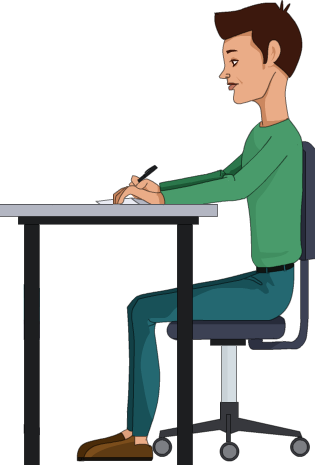
- Defective Positioning of the paper.
Improper positioning of paper is another cause for poor letter formation. See the illustration of proper positioning of paper for writing.
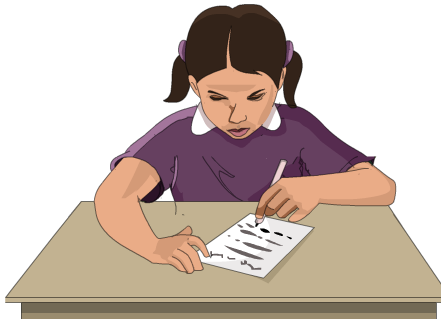
Some variations are possible according to the convenience of the child.Ensure that the child holds firmly the paper or the notebook. Note the position of the non-writing hand. It helps to hold the paper firmly. The paper is away from the edge of the table. Also note that the paper is at an appropriate angle. Note the position of the head as well.
-
Search the internet: tips for improving handwriting.
- Improper gripping of pencil/pen.
Many children struggling to write have improper pencil grip. Proper pencil grip is necessary for smooth writing. Parents can examine how their child holds the pencil or pen. Is the grip correct? A faulty pencil grip contributes to poor handwriting.
Ideally, the thumb, index and middle fingers are used to hold the pencil. This is called the tripod grip. In the tripod grip, the pencil or pen is held with thumb and the index finger. The pen or pencil rests on the middle finger.
Another grip which many children use is known as the quadropod grip. Here four fingers, the thumb, middle finger, index finger and the ring finger, are used.
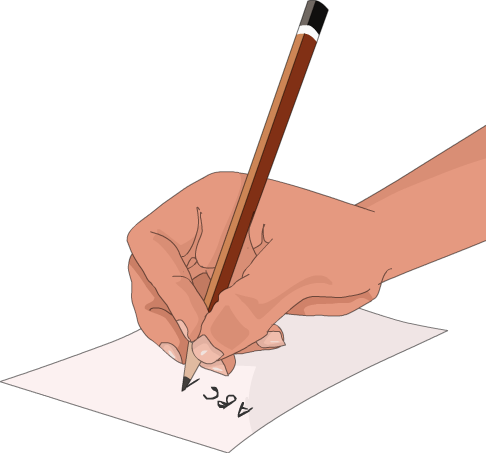
These websites are useful to learn more on remediation of hand
For improved handwriting, a child should have a proper grip. It is also important that the child uses proper amount of pressure while writing. The pen or pencil should not be held too tightly and too much force should not be used while writing. Improper grip and improper use of force may cause pain in the hand. Some children complain of cramps or pain in the hand after writing for some time.
Children can use a pencil gripper for holding the pen and pencil properly.Some pens come with grips. These pens can be used.Pencil grippers are available. See image below.
Use grippers with pens/pencils
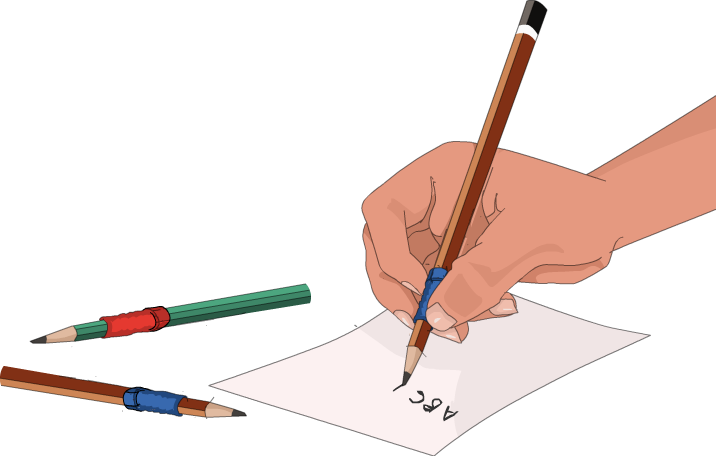
- Defective Posture.
- Inadequate gross and fine motor skills: contributory factors for dysgraphia.
Writing is a complex task involving different muscles. Muscles in the shoulder, elbow, wrists, and fingers are used while performing the task of writing.It requires coordination between both sides of the brain. Eye- hand coordination is also required for good handwriting.
Gross motor movements :
The gross motor skills in handwriting relates to the posture of various muscles that are required for handwriting. Control of muscles in the neck, shoulder and trunk is needed to support movements of fingers and hands in writing. A child first develops gross motor movements and then progresses to master fine motor skills. Deficiency in developing gross motor skills would also affect fine motor movements.
Handwriting is an activity involving many steps. For writing with a pencil, the brain has to plan actions in sequence. The muscles involved in giving stability to shoulders are first activated. These muscles support movements of fingers and hands with proper force and timing. Children with decreased motor planning skills have problems with writing.Motor planning also depends on visual clues. Improper visual perception also affects motor planning.
A child with low muscle tone may experience fatigue after writing several sentences in a paragraph or story. Some children complain of pain after writing for some time. Muscle strengthening exercises are helpful for such children.
Activities for improving gross motor skills.
Given below are activities for improving motor skills. When should the child do these activities? Yoga can be done at a specified time. The other activities can be done when the child has already studied for some time and the child requires a break to regain concentration. This is a good time to practise some of the exercises shown below. The child gets a break and at the same time skill development also takes place.
- Yoga has many exercises for improving gross motor skills.Please ensure that yoga is learnt from a competent teacher.
- Wheelbarrow walking.
Hold the legs of the child and the child’s hands act as support. Ask the child to walk on hands. The person holding the legs also move along with the child. This is good for strengthening core muscles. Strong core muscles help to sit erect on chair, bending to tie shoelaces and for reaching up to switch off the lights etc.Wheelbarrow walking is also great for strengthening hand and finger muscles for writing.
Grownups can also do this exercise. It can be a fun activity for the whole family!
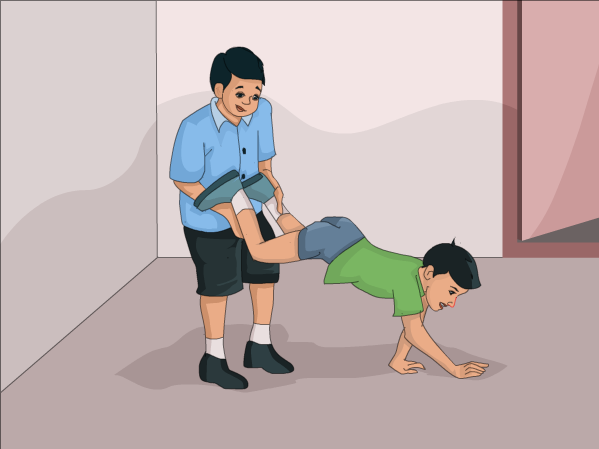
- Crab walking
Crab walking is good to strengthen core muscles. It also develops fine control movements needed for writing by strengthening hands and fingers.
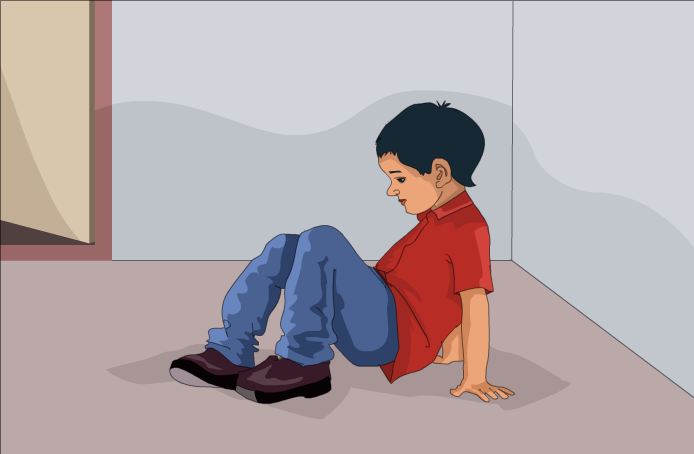
To get into the position of crab walking, sit on the floor with knees pointing up. Place hands behind the back and push down on the floor. Lift the bottom up off the floor and now the child is ready for crab walking. It is easier to walk backward and therefore encourage the child to walk backward first. After mastering this backward movement, the child can try to move forward. The child can then learn moving sideways.
To improve the sense of direction, the child can go around any object, say a bucket. Also ask the child to move sideways, left and right, to improve the sense of direction. This helps in removing the confusion while writing and this activity is useful for children who reverse letters and numbers.
Crab walking is a weight bearing activity and it is good for stimulating the nerve cells in the brain involved in attention and focus. This activity involves movements which have bilateral coordination (both sides of the brain are involved) and it also develops motor planning skills. Many skills required in writing are present in crab walking.
This can be a fun activity for the whole family. The grownups can also easily do this activity.
- Pushing against the wall: Exercise for shoulders.
We often underestimate the role of shoulders in writing. Healthy shoulders are also required for many of our day to day activities. Strong shoulders are necessary to play basketball, volleyball, cricket and racket games like tennis, badminton etc. This exercise strenghthens muscles in the shoulder and hand.

This is an exercise which a child can do easily. See the image below. Bend one knee in the forward position with the other leg stretched back. Rest both palms palm up on the wall. Push the wall with both hands. Change the position of the legs and do the exercise again.
- Walk the line activity for improving reading and writing.
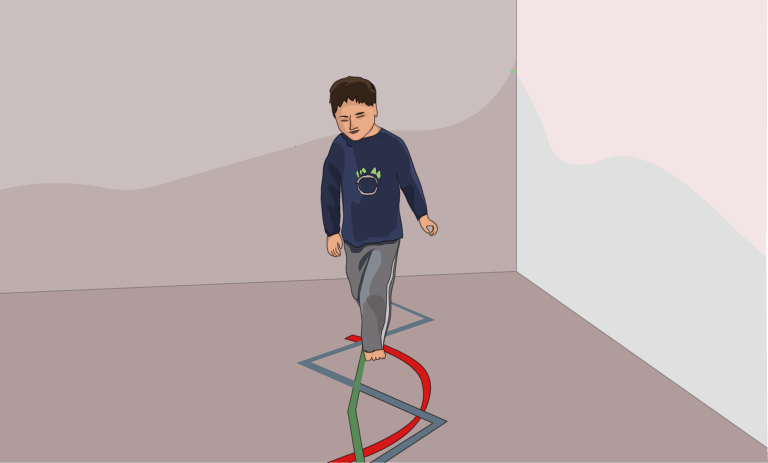
Mastering gross motor skills is the first step in learning fine motor skills.Walking on a straight line requires motor planning which is also involved in writing. In order to develop a sense of direction, ask the child to move left or right of a line and up or down the line. Some obstacles can be kept and the child has to move around the objects. To increase the level of motor planning, the child may be required to raise one arm and walk. To improve directionality, the child may be asked to raise right arm or left arm. To increase balance, the child may be required to balance something on her/his head- a plastic plate or a book or some other suitable object. All these actions can be performed while walking.
One reason for poor handwriting is deficit in visual imprints of alphabets in the memory. To strengthen memory of alphabets, the child can be asked to walk on alphabets written in big size on the floor.
The line for walking need not be a straight line. It can be curved or it can take a zigzag path.See the figure.
- Hopping on one leg.
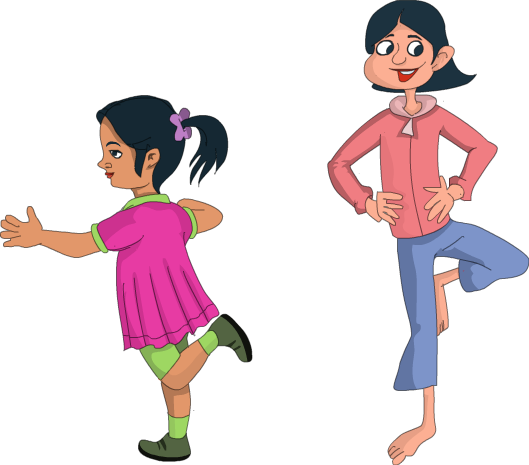
Just like walking on lines, hopping on one leg also improves gross motor skills. The child can be encouraged to hop on straight as well as curved lines. To improve directionality, instruction can be given to hop sideways: to right, to left. The child can also be asked to raise right arm or left arm while hopping. After hopping for some time, ask the child to change legs.
Your child can try some variations to the task of hopping. You can ask your child to turn left/right while hopping. The turning takes place in air and the child lands on the hopping foot 90 degrees to the original position. Similarly, the child can be asked to turn to the left/right in air and land on the hopping foot. Another variation is to make a half-circle while in air and land on the hopping foot. The turn here is 180degrees.
- Swimming has many benefits and it also helps in learning gross motor skills.

Swimming improves gross motor and visual motor skills and it is a very useful exercise to improve coordination. It definitely improves the motor planning skills.
Researchers have found that swimming activates the two hemispheres and the four lobes of the brain. This makes swimming an excellent exercise to improve language ability and the general ability to learn. Swimming prepares the child to read and write.
Hippocampus is a small region in the brain which is associated with memory and learning. Recent research indicates that swimming helps hippocampus to grow by adding new neural pathways and this increases the ability of the brain to learn and remember.
- Skywriting.

This is a proven method to improve handwriting. The child writes a letter in air using the index finger with large movements and names the letter being written.The eyes should follow the movements of the finger. Telling the name of the letter and the body movement help the brain to memorize the name of the letter. The same can be done with words also. The child writes in air the letters of the word naming each letter and finally the word. This is a good method of mastering the spelling of words. The child becomes aware of the directionality involved in writing the letter/word. The larger the arm movement, the better it is. In this method, visual, auditory and kinaesthetic (movement) aspects of writing are taken care of. Sky writing is a good multi-sensory approach to writing.
- Bilateral coordination: Throwing/ catching a ball activity.
Bilateral coordination means the ability to coordinate both sides of the body while doing an activity. In bilateral coordination, both sides of the brain communicate with each other. Lack of bilateral coordination can cause learning difficulty including difficulty in writing. An excellent activity to improve bilateral coordination is throwing a ball. Catching practice also is good. Ask the child to throw the ball with both hands. Similarly, while catching also ask the child to catch with both hands.
Cross the midline to catch the ball activity.
What is midline? The midline is an imaginary line that divides our body into two equal halves, left and right. We use both our hands while doing daily activities. A child over a period of time starts using one hand more than the other and this becomes the child’s dominant hand. A child with a dominant hand depends on one hand to do most of the activities and the other hand helps the dominant hand. A child with a dominant hand crosses the midline often to get things done. While scratching the elbows, tying shoelaces, stretching to take things, or playing the dominant hand crosses the midline.
Why crossing the midline is important?The brain has two hemispheres, the left brain and the right brain. Both these halves of the brain are connected by millions of nerve fibres. When we cross the midline these nerve fibres get activated and communication takes place between the left and the right brain. Over time, we develop a dominant hand and crossing the midline takes place often and both the brains are in touch with each other. A child, without a dominant hand, may experience difficulty in writing and tracking a moving object etc and they may have inadequate fine motor skills.
Catching a ball with both hands involves crossing the midline.Play with your child. Ask your child to catch a ball with both hands. The ball can be thrown straight to the middle, to the left and to the right of the child. This activity ensures crossing the midline.
- Vertical Surface writing
One way to improve handwriting is to make the child write on a board. Standing and writing helps the child to improve both gross and fine motor skills. The benefits of vertical writing are:
- The larger surface of a board gives a chance to make big arm movements and writing muscles in the shoulder, elbow and wrists get activated.
- Encourages better pencil grip and control of use of writing instruments.
- As the child stands very close to the board (the writing surface) she/he can have a better visual perception of the act of writing. A better visual attention leads to better hand- eye coordination.
- Better orthographic coding. Some children are not able to store the image of letter or word forms in the brain. The inability to create mental pictures of words in the brain is called orthographic coding disorder. This affects writing as the child is not able to recall the shape of a letter or a word. Writing on a large vertical surface can help to remember words and letters.
Ask the child to close her/his eyes and hold the child’s hand and write a letter. Ask the child to identify the letter, eyes still closed. A large surface area is necessary to do this activity and this helps the child to have a better orthographic coding.
- Lack of spatial awareness causes poor handwriting. The space between letters and word are not even. The child is unable to stick to margins. There is confusion about directions- left, right, up and down. Writing on a large surface allows better spatial awareness.
- Crossing the midline activity in vertical writing. Midline is an imaginary line that divides the body of a child into right and left sides. Children are able to do activities crossing hands and legs across the midline. Children, who retain the midline problem, tend to use each side of the body separately and they may have trouble using both hands together. These children have trouble in learning.Vertical writing makes the children cross the midline. See the image below.
- Bilateral coordination: double doodling. Movements of the body play an important role in learning and thinking. An excellent way to improve writing is to double doodle on a board. Bilateral drawing helps developing eye-hand coordination and directionality. There is improvement of visual skills which leads to better performance. The double doodle exercise also helps to improve creativity, visual, perceptual, kinesthetic and fine motor skills. How to do double doodle? Stand at the centre of the board and with both hands draw mirror images of any shape on the board.See the image below.
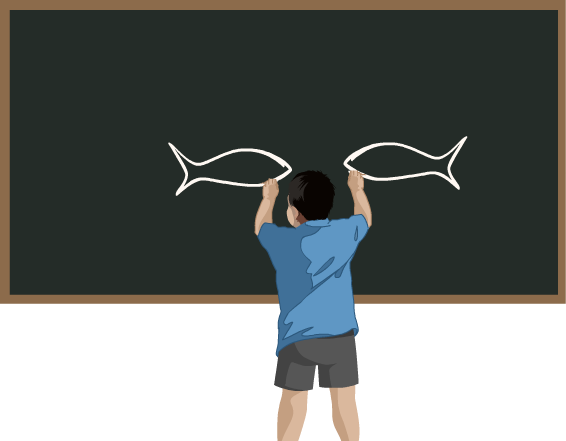
- Lack of fine motor skills is another reason for poor handwriting.
Fine motor skills are needed for proper formation of letters and words. Given below are activities for improving fine motor skills. The order of the activities is not important. Every activity is useful in its own way.
- Drawing a line without touching the pathways improves fine motor skills as well as good hand- eye coordination. Solving maze puzzles improves visual- motor skills. See figure below.
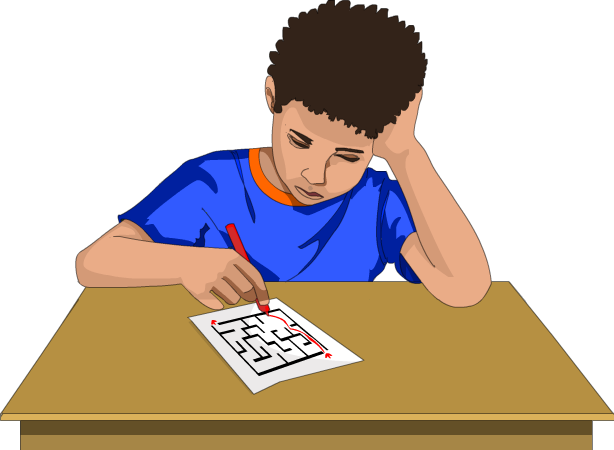
Parents can download maze puzzles from the net and the child can solve the puzzles. Maze puzzle books are also available.
- Playing carrom helps improve learning skills. Striking the carrom pieces with a flick of fingers improves both motor planning skill and directionality. Playing board games like carrom has a beneficial effect on hippocampus which is an area of brain dealing with thought and memory formation. The other benefits of playing board games are: better spatial awareness, manual skill, eye-hand coordination and visual perception.
- Sorting beads of different colours. Using fingers, the child has to sort small beads of different colours. The benefits of this activity apart from the use of thumb and index finger are: colour recognition, fine hand movements, better eye- hand coordination.
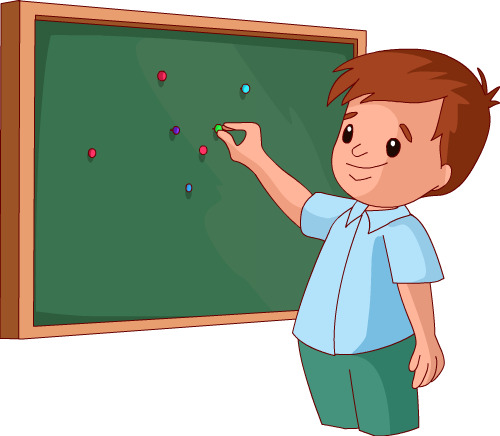
- Squeezing activities
- Squeezing lemon: This activity requires the use of thumb, index and middle fingers- all the three fingers used in writing. The action of squeezing strengthens the fingers.
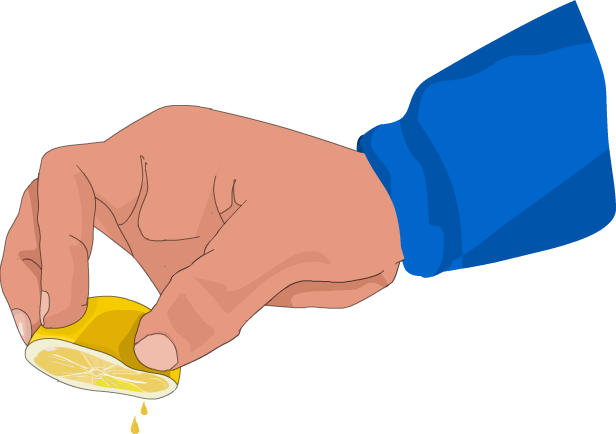
- Wringing clothes: A similar strengthening exercise is wringing a wet cloth and removing water. This is an especially good activity because both hands are used. See the figure below.
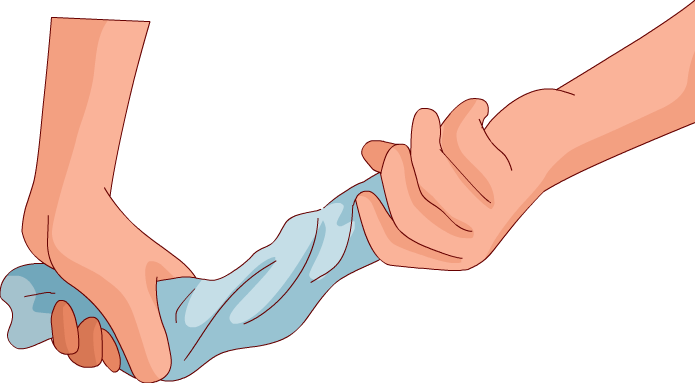
- Crumpling paper:Another effective exercise to strengthen fingers is to crumple a piece of paper (preferably paper of A4 size) and make a small ball out of it. The challenge is to make the ball as small as possible.
If this activity is done with the hand stretched out then even the shoulder muscles can be strengthened. Use only one hand to crumple the paper. Another variation is to stretch both hands and crumple paper in each hand at the same time.

The crumpled ball can be then used to play toss-the-ball-into-a-bucket game.Keep a bucket at a convenient distance and ask the child to toss the ball into the bucket. The whole family can play this game.This game improves spatial awareness.
- Squeezing a smiley ball:This simple activity strengthens muscles in the fingers, hands and wrist. The hands and fingers have nerves and these nerves are connected to the brain. When the ball is squeezed, these nerves get activated and parts of the brain too get active. This is a good exercise to relieve stress.It is good to remove tension in the muscles. Further, squeezing the ball increases the circulation of the blood in the hand.

To strengthen thumb and the index finger, pinch the ball using these fingers. To strengthen the thumb, index and middle fingers, used in writing, pinch the ball with these three fingers.Another useful variation is to keep the ball on a table and roll the ball from the base of the palm to the tip of the fingers. See the figures below.
- Kneading dough: When you make dough for roti ask the child to knead the dough. This can be done after you have made the dough. This is a good exercise for strengthening the hand and the fingers. The muscles in the wrist and shoulders also get strengthened. You can also buy play dough to do this activity. See the three images below.
- Shows kneading with fingers
- Shows kneading with fist.
- Activity with both hands for bilateral coordination.
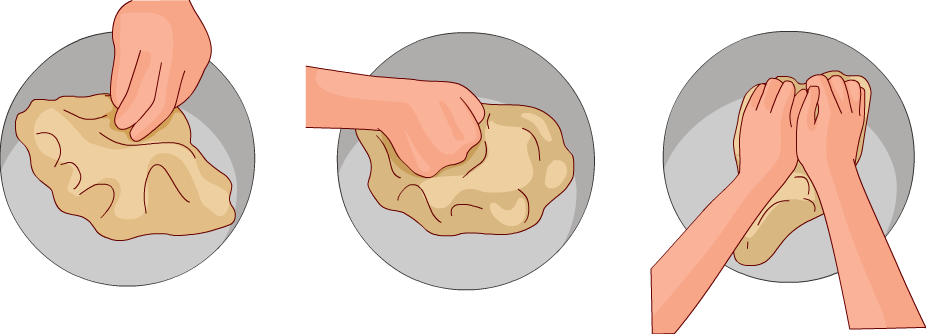
- Squeezing lemon: This activity requires the use of thumb, index and middle fingers- all the three fingers used in writing. The action of squeezing strengthens the fingers.
- Kinaesthetic -tactile learning for visual memory of letters and words.
Kinaesthetic- tactile learners learn through body movements and by the sense of touch. They use both gross motor skills and fine motor skills to learn by movement and by touch.Sky writing discussed above is a kinaesthetic learning activity. Along with skywriting, the two activities given below can help children with dysgraphia.
- Writing on hands palm and back.
For tactile learners, writing on hands can be a very effective way of integrating into their memory the shapes of letters and numbers. Even the spelling of words can be learnt through this method.
Ask the child to close her/his eyes and write on the forearm the letter/number/word that needs to be taught to the child. See the figure below.
Ask the child to tell what is being written in her/his hand. Some children may not be able to sense what is written on the forearm. For almost all children, the back is a very sensitive area and writing on the back would be more effective. The palm is another sensitive area. Another place is the area in the head just above the ear.
To intensify the effect of touch, the above activity can be done in the dark, preferably at night in a quiet place. The advantage is the child can keep her/his eyes open and there is no distraction by the other senses.Sitting in the dark helps the child to focus better. The child can do skywriting (discussed above) in the dark naming the letter/number/word. The auditory senses also get activated.
Another variation is to make the child write on your hand the letters/numbers/words. The child learns by the movement of writing on your hand.
- Writing in the sand.
Maria Montessori (1870-1952) believed in the importance of sensory learning. She made her students to trace with fingers the letters of the alphabet, cut out of sandpaper and pasted on thick cardboard to learn alphabets. The children learnt by feeling the letters.
A more convenient way of using tactile learning is to make the child write in sand with her/his fingers. Fine sand can be kept in a tray and the child can write the letters or words. See the image below.
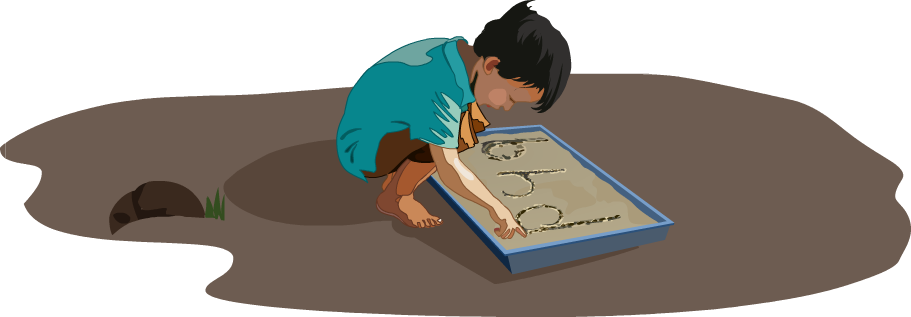
The child can write the letters/words on sand outdoors also. The advantage of writing outdoors is that the child can write with large movements.
- Writing on the table.
Students who struggle with writing can find the activity of writing on the table fruitful. Dip the index finger in a bowl of water and write letter/number/word on the table. The tactile stimulation helps learning. The wet finger makes an impression on the table and this is a visual stimulation for the child.
- Making shapes of letters:
Struggling writers can make shapes of letters with small objects- beads, small stones, seeds, etc. See the image below.
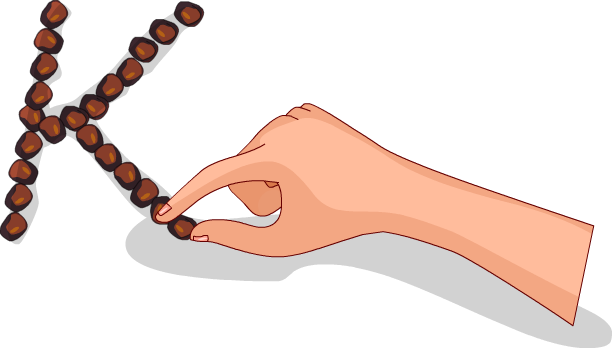
- Writing letters, numbers and words with fine powder/ fine salt / fine sand. Take a pinch of the material (powder, sand. or salt) with thumb and index finger and make shapes of letters or write words. It is a good kinesthetic- tactile way of learning to write and improving the memory of the images of the letters/words. Fine motor skills are also used in this activity. The child should read aloud what is being written to include auditory process also in the learning.
- Making shapes of letters on a sheet of paper filled with dots. Struggling readers can connect the dots to make images of letters and numbers. The parents have to make only one copy of the paper with dots. This can be kept as a master copy and enough number of photostat copies can be had for practising this activity. The parents can have sheets with different sizes of dots.
- Improving the sense of directionality using a sheet of paper with dots.
For many children struggling with reading, spelling or writing, directionality is a problem. Parents can use pages with dots to make their child aware of directions. The child can be asked to connect two or more dots from left to right. Similarly, ask the child to connect dots from right to left. Up and down movements can also be practised. The child can be asked to make lines slanting towards right or towards left. Children can also draw pictures connecting dots.
The child could be asked to mark on the page the way from a particular point ( say a bus stop or railway station nearby) to her/his house. This can be a challenging task for many children with direction problems.
- Writing on hands palm and back.
- Writing activities.
Reading and writing are closely related. Parents can assess their child’s ability to read fluently. They also should check the level of comprehension skills of their child. Reading and writing activities should go together. Given below are some writing activities.
- Self correction.
The child can be asked to check what she/he has written. Whatever corrections the child can make, is advancement in learning. One useful activity is to make the child copy as fast as possible a passage within a time limit of five minutes.And ask the child to spot errors- mistakes in spelling, omissions, and punctuations.The parent can then gently point out errors, if any. Continuing this activity for a long period of time can be useful to minimize the errors in writing. Another benefit of this activity is that the parents come to know the areas of difficulty of the child. The time limit of 5 minutes makes the child do the activity with concentration. Even here, the child may lose concentration. The parents can find out where the child is making more mistakes- at the beginning, in the middle or at the end.
- Dictation.
For a child struggling to write, frequent dictation exercises is a good remedial measure. The parents can identify the areas of weakness of the child and accordingly dictate words and short sentences.
Things will go better if the parent works on one thing at a time. Concentrate on one area of weakness. If the parent wants to remedy poor letter formation, then tell the child that the spelling mistakes would be ignored and the only focus is on formation of letters. If the aim of the dictation is to improve spelling, then don’t bother to correct formation of letters. This way the child can focus on one item.
It is important parents give dictation of words that the child can write well. This gives an opportunity to praise the child. Creating situations to praise the child is very important to boost the self- image of the child.
- Story writing.
If the child is good at drawing, ask her/him to draw a picture ( it can be about anything) and write something about the picture. It can be few sentences or a short story. Children with dysgraphia have difficulty in putting their thoughts to paper and frequent writing activities are useful. If the child is not interested in drawing a picture, then show her/him a picture and ask her/him to write few sentences about the picture.
- Writing sentences.
Making the child write 15 sentences every day is an effective method to improve her/his ability to write and to put her/his thoughts on paper. Regular practice can have a tremendous effect on the child’s writing and sentence forming skills. Initially, the child may write about herself/himself or about persons or things close to the child- members of family, house, school, garden etc. By and by, the child would start writing about diverse topics.
- Proof reading:
This is an activity similar to self correction. Parents can write sentences suiting to the level of their child. It can be a small paragraph of three or four sentences. This acts as the reference material. The same material can be reproduced with some mistakes and the child has to spot and correct the mistakes looking at the reference material. This activity improves concentration. It also gives the child the much needed ability of paying attention to details.
An example is given below.
- Reference material:
An old cat saw a mouse sitting on a chair. It wanted to catch the mouse and eat it. The mouse saw the cat and it ran away. The cat chased the rat but it hid in a hole.
- Material for proof reading.
An olb cat saw a mouse siting on a hair. It wanted to clatch the meouse and eat it. The mouse sam the cat and it rain away. The cat cbased the rat but it hid in a whole. ( There are nine mistakes )
Another version of this activity is to select 5-8 words and write a short paragraph using these words. This is the reference material. Then write another paragraph using the selected words. While writing the second paragraph, the selected words only are spelt wrongly. This is the proof reading material. The child has to spot the errors and correct them. The advantage of this activity is that the parent can choose the reference material and proof reading material to rectify the specific mistakes the child makes.
An example is given below.
- Reference material. Words selected are :hundred, pictures, thick, this, world
My father gave me this book. I like this thick book. It has hundred pages with many beautiful pictures. It also has a map of the world.
- Material for proof reading.
The man sitting next to me gave me a hindred rupee note. He had very thik hands. He was holding a book with many pitchers. He said he had seen many parts of the wolrd. Did you like tbis story? ( There are five mistakes)
- Reference material:
Some General Strategies
There are some strategies and therapies that can help a child to improve his writing. Some of them are below.
- Use of assistive technologies like word processing software, speech to text, proof reading programs, electronic dictionaries etc.
- Teacher should develop an Individualised educational program for the student.
- Teachers and parents should identify each difficulty they are facing and try to focus on that.
- Use specially designed writing aids. Pencil grips are useful and comfortable for dysgraphic children.
- Encourage playing games.
- Allow recording lectures in the classroom
- Let them do oral exams.
- Suggest use of wide rule paper and graph paper.
- Self correction.
- Drawing a line without touching the pathways improves fine motor skills as well as good hand- eye coordination. Solving maze puzzles improves visual- motor skills. See figure below.

